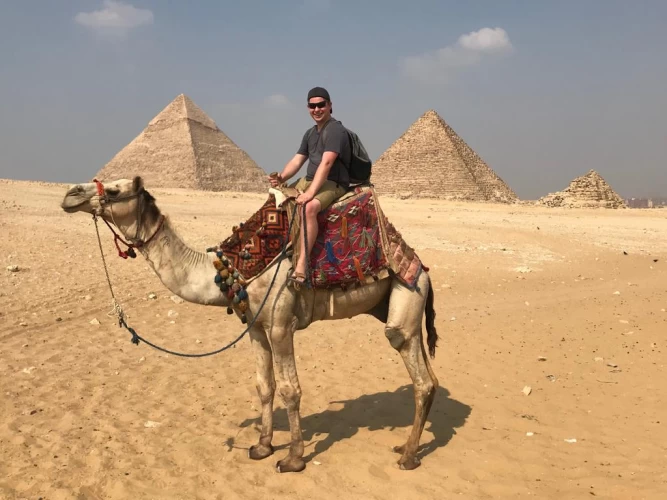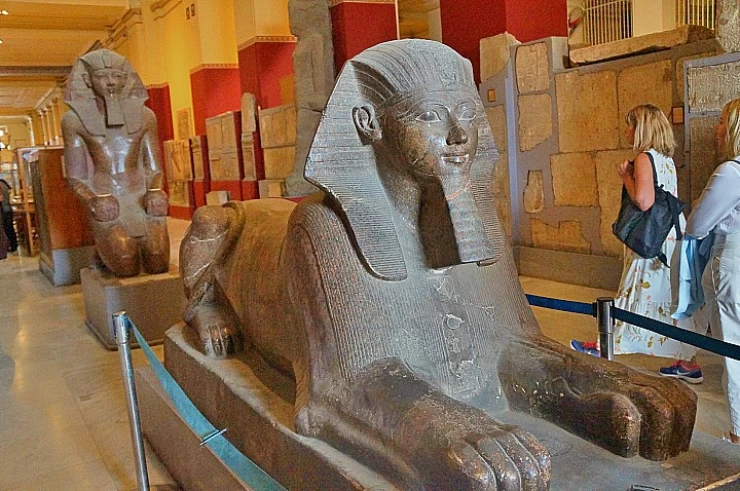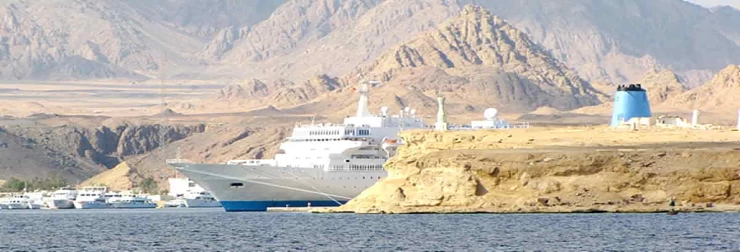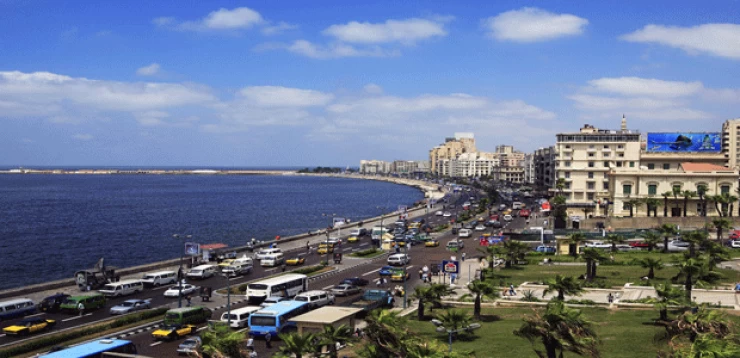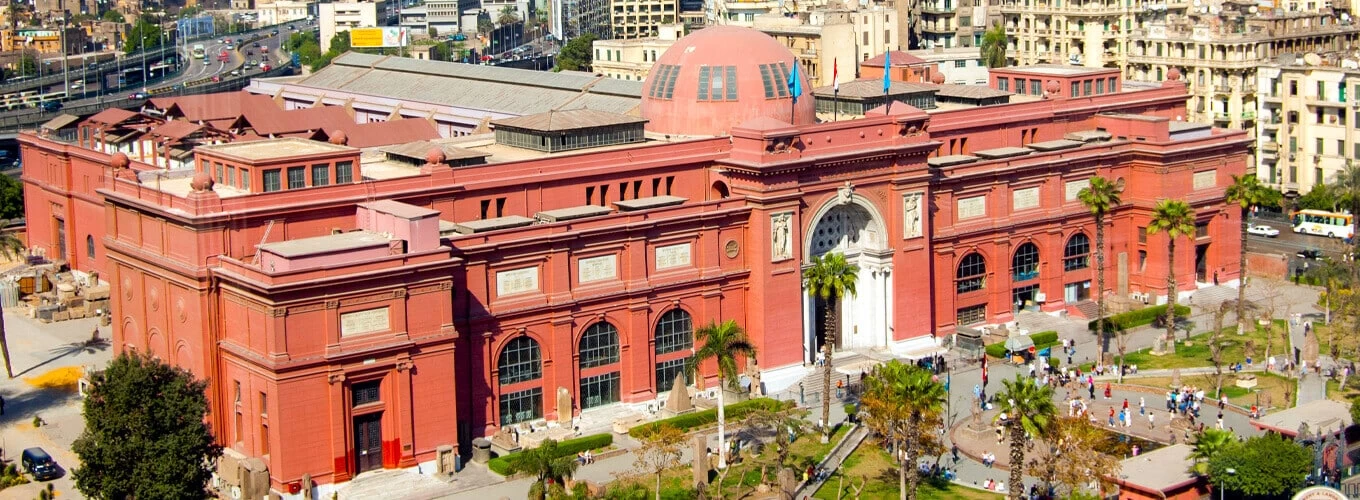
Cairo's Egyptian Museum
The Egyptian Museum, officially known as the Museum of Egyptian Antiquities, is located in Cairo, Egypt, near Tahrir Square. It is one of the oldest and most renowned museums dedicated to ancient Egyptian history and culture.
History and Architecture:
Establishment: The museum was founded in 1858 by the famous French Egyptologist Auguste Mariette.
Location: It was originally housed in Boulaq, but later moved to its current location in Tahrir Square in 1902.
Architecture: The museum's main building was designed by the French architect Marcel Dourgnon in a Neoclassical style. It has a grand façade adorned with columns and is surrounded by gardens.
Collections and Exhibits:
Treasures of Tutankhamun: The museum is most famous for its collection of artifacts from the tomb of Tutankhamun, discovered by Howard Carter in 1922. The collection includes Tutankhamun's iconic gold death mask, jewelry, chariots, and other treasures.
Royal Mummy Room: The museum houses a collection of royal mummies, including those of pharaohs such as Ramses II and Seti I.
Other Exhibits: The museum has a vast collection of over 120,000 items, including statues, sarcophagi, papyri, and everyday objects from ancient Egypt. These artifacts span various periods of Egyptian history, from prehistoric times through the Greco-Roman period.
Importance and Significance:
Research Hub: The Egyptian Museum has been a center for Egyptological research and study since its inception. It continues to attract scholars and researchers from around the world.
Cultural Heritage: The museum preserves and showcases Egypt's rich cultural heritage, providing insights into the art, religion, and daily life of ancient Egyptians.
Tourism: As one of Egypt's top tourist attractions, the museum plays a crucial role in promoting tourism and cultural exchange.
Future Developments:
Grand Egyptian Museum: In recent years, many artifacts from the Egyptian Museum have been relocated to the new Grand Egyptian Museum (GEM) near the Giza Pyramids. The GEM aims to become the largest archaeological museum in the world and will house a vast collection of artifacts, including those from Tutankhamun's tomb.
Renovation Plans: There have been ongoing discussions and plans for renovating the original Egyptian Museum in Cairo to enhance visitor experience and preserve its collections for future generations.
The Egyptian Museum remains a beacon of ancient Egyptian history and continues to captivate visitors with its unparalleled collection of artifacts and treasures.
The Egyptian Museum focused on antiquities, has evolved in ideas from the time of Muhammad Ali Pasha from 1805 up to 1848, when he ruled Egypt. Being a monarch who knew about Egypt’s heritage and its threats through the outflow of things that went out of Egypt, he proclaimed a command establishing the first Antiquities of Egypt museum in Coppers Cairo. The location of this first museum was also close to El-Ezbekia Garden, and its displays were well organized by Hakikan Effendi and supervised by Youssef Diaa Effendi. Shaikh Rifa’a al-Tahtawi was instrumental during this period in averting the loss of Egypt’s archaeological wealth.
He controlled excavations and maintenance but also made laws of his own, and they included that no one should dig again unless permission was granted. Moreover, Al-Tahtawi ordered that every relic that was found was to be brought and kept in the El-Ezbekia Museum and ordered that such relics be not taken out of the country so that they remained in Egypt.
This productive activity prevented the loss of ancient monuments of Egypt as well as the birth of the first principles of archaeology in Egypt, which gave rise to the present-day Egyptian Museum.
It is regarded as one of the first archeological museums in the Middle East. It holds uncovered creases of royalty of Egyptian dynasties. The museums consist of more than 170000 objects, objects covering the chronology from pre-dynasty time to the Graeco-Roman period (5500 BC-AAD 364). The museum is found in Cairo, Broaden Tahir Square.
The designer is Marcel Dourgnon, a French national, and its construction was done by the famous Italian company of Giuseppe Garozzo and Francesco Zaffrani.
The Egyptian Museum’s treasures include the treasures of the Golden Mask of the young Pharaoh Tutankhamun and the Treasures of the King. The Golden Funerary Mask, also known as the mummy mask, is an exquisite handcrafted artistic artifact that captures everywhere elegance.
One of the other notable artistic works in the museum is the Menkaure Triads, which was found at the valley temple close to the Giza pyramids. It is carved in a single piece of stone depicting a king in the crown of upper Egypt. The museum has numerous collections from the various Egyptian civilizations and different periods, and it is one of the activities that are carried out in Cairo day tours from the airport, which is incomparably enjoyable to see pieces that are many centuries old.







